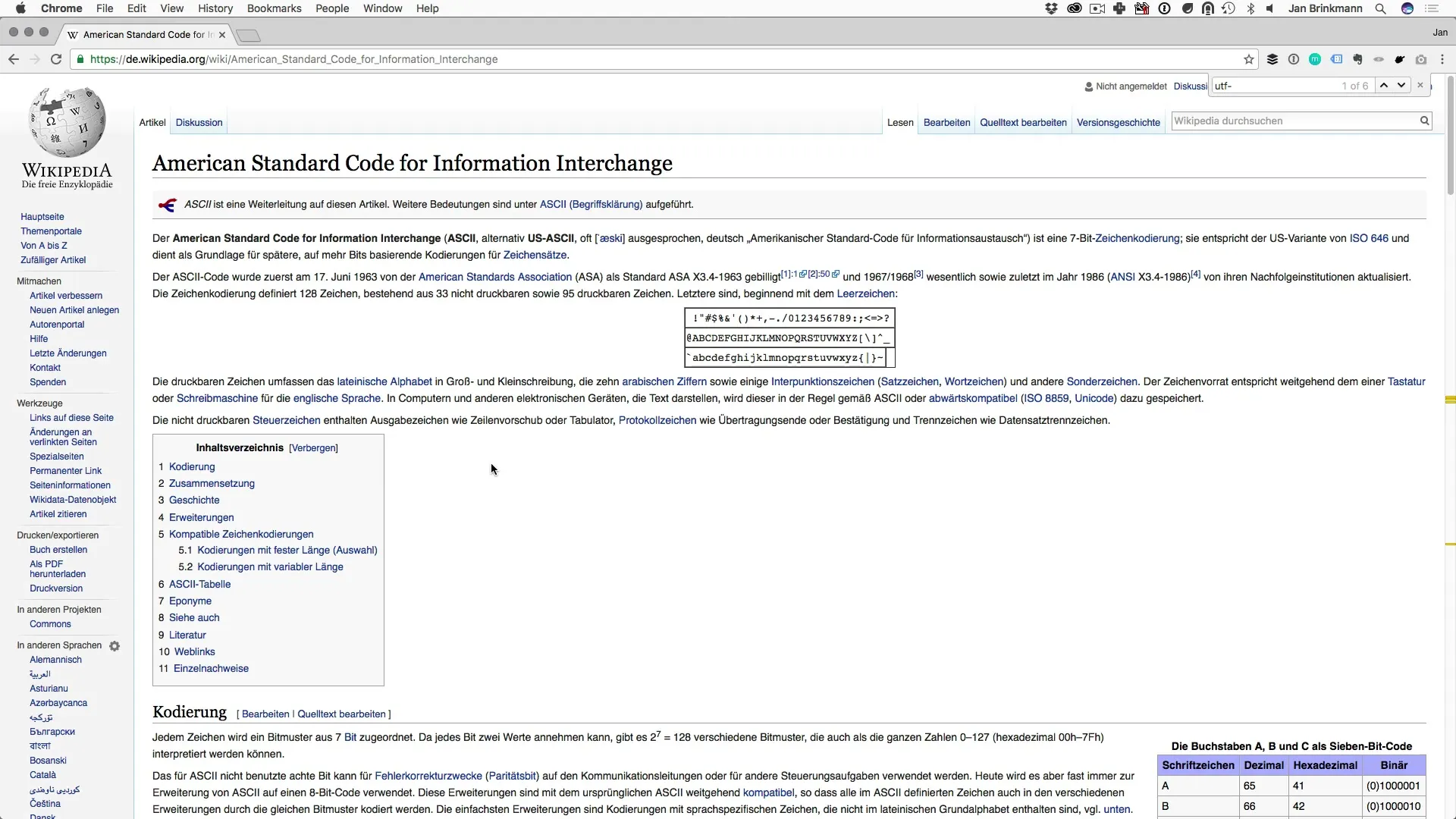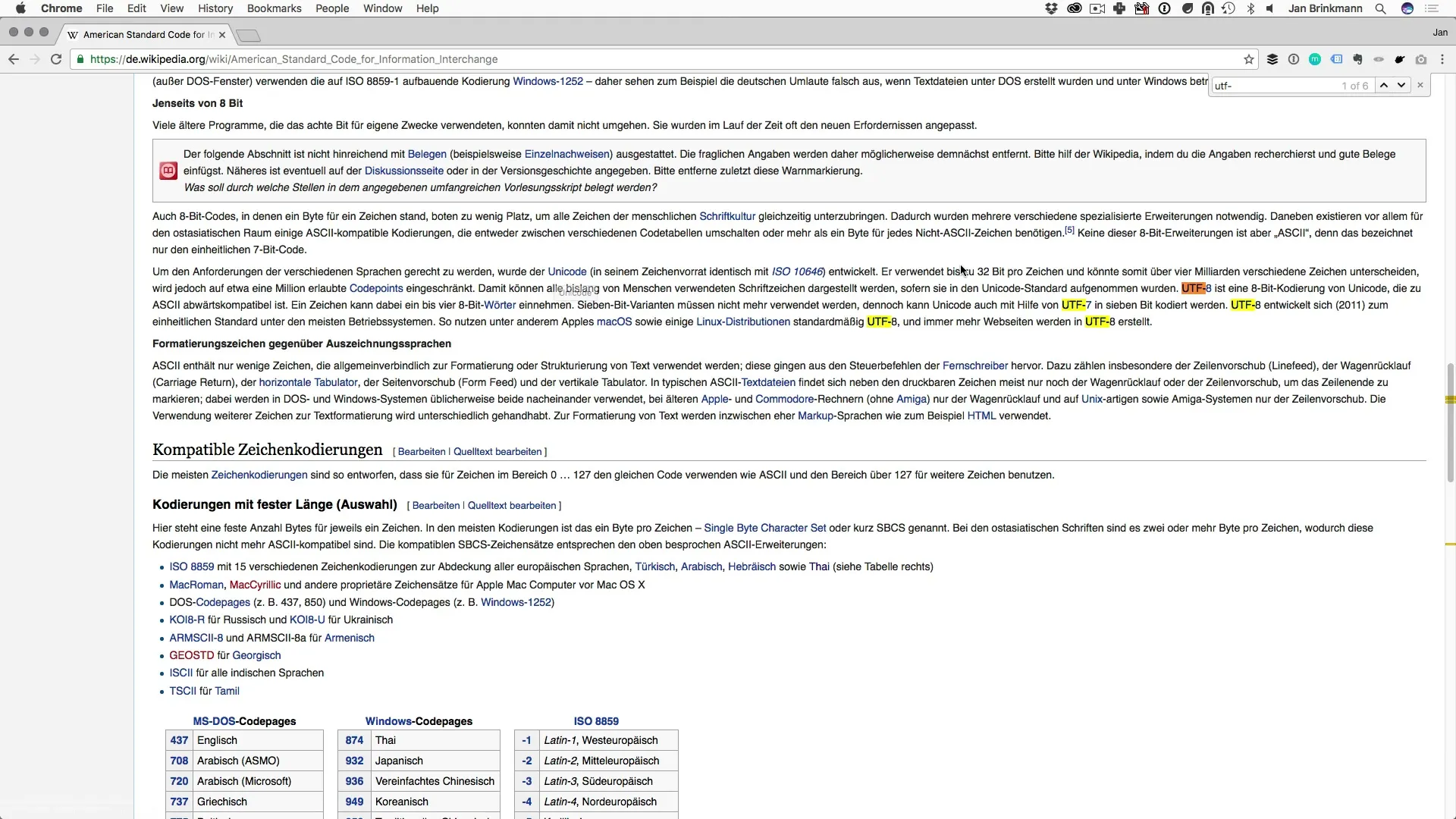The processing of data has a lot to do with numbers, but what happens when it comes to letters? How is text stored in memory and how is it saved on a hard drive? These questions are central if you want to dive deeper into software programming. In this guide, you will learn how text is stored in the form of strings and what standards like ASCII and Unicode play a role in this.
Key Insights
- The ASCII code assigns specific numeric values to characters.
- Unicode extends the ASCII code to represent a variety of characters from different languages.
- Each letter, number, and symbol is stored in a standardized table that defines its numeric value.
Step-by-Step Guide
1. Understanding the Basics of Character Encoding
A central point in software programming is how text is stored in memory. The first step is to take a look at the ASCII code. ASCII (American Standard Code for Information Interchange) is an encoding that converts characters into numeric values. Each character, whether a letter or number, has a numeric value defined by the ASCII code.

2. ASCII and Its Applications
To get an idea of how characters are encoded, it's important to know that, for example, the number 65 represents the letter 'A'. So, if you are working with a data type defined as a string and the first value in that string is the number 65, the output will display the letter 'A'. This mapping is fundamental for understanding how text is processed.
3. The Reason for Introducing Unicode
Over time, it became clear that ASCII was unable to represent the many different characters of the world. While ASCII can represent only 256 possible characters, more are needed for global scripts than the ASCII system can accommodate. This is where Unicode comes into play, allowing for a coded representation of over 4 billion characters.

4. Unicode and Its Advantages
What makes Unicode so special? Unlike ASCII, which is only designed for English characters, Unicode supports many different characters from various languages, including Chinese, Japanese, and Hebrew. This ensures that text is understandable internationally.
5. Implementing Characters in Unicode
How does the mapping of characters to numeric values work in Unicode? Each character is assigned a specific value that is then used in programming. This mapping allows for a variety of characters in software applications. Thus, Unicode is more than just a simple encoding; it facilitates global communication.
Summary – Introduction to Software Programming: Understanding Strings in Memory
The world of character encodings is exciting and opens up many possibilities in software programming. You have learned that ASCII and Unicode are the key standards that ensure that letters and other characters are stored correctly in memory and on hard drives. These basics are crucial for having a solid understanding when programming text applications.
Frequently Asked Questions
What is ASCII?ASCII is a character encoding that assigns numeric values to characters.
Why was Unicode developed?Unicode was developed to represent a variety of characters from different languages that ASCII cannot cover.
How many characters can Unicode represent?Unicode can represent over 4 billion different characters.
How is text stored in a data type?Text is stored in a data type as a string, with each character assigned a numeric value.
What is the difference between ASCII and Unicode?ASCII can only encode 256 characters, while Unicode offers a comprehensive collection of global characters.


